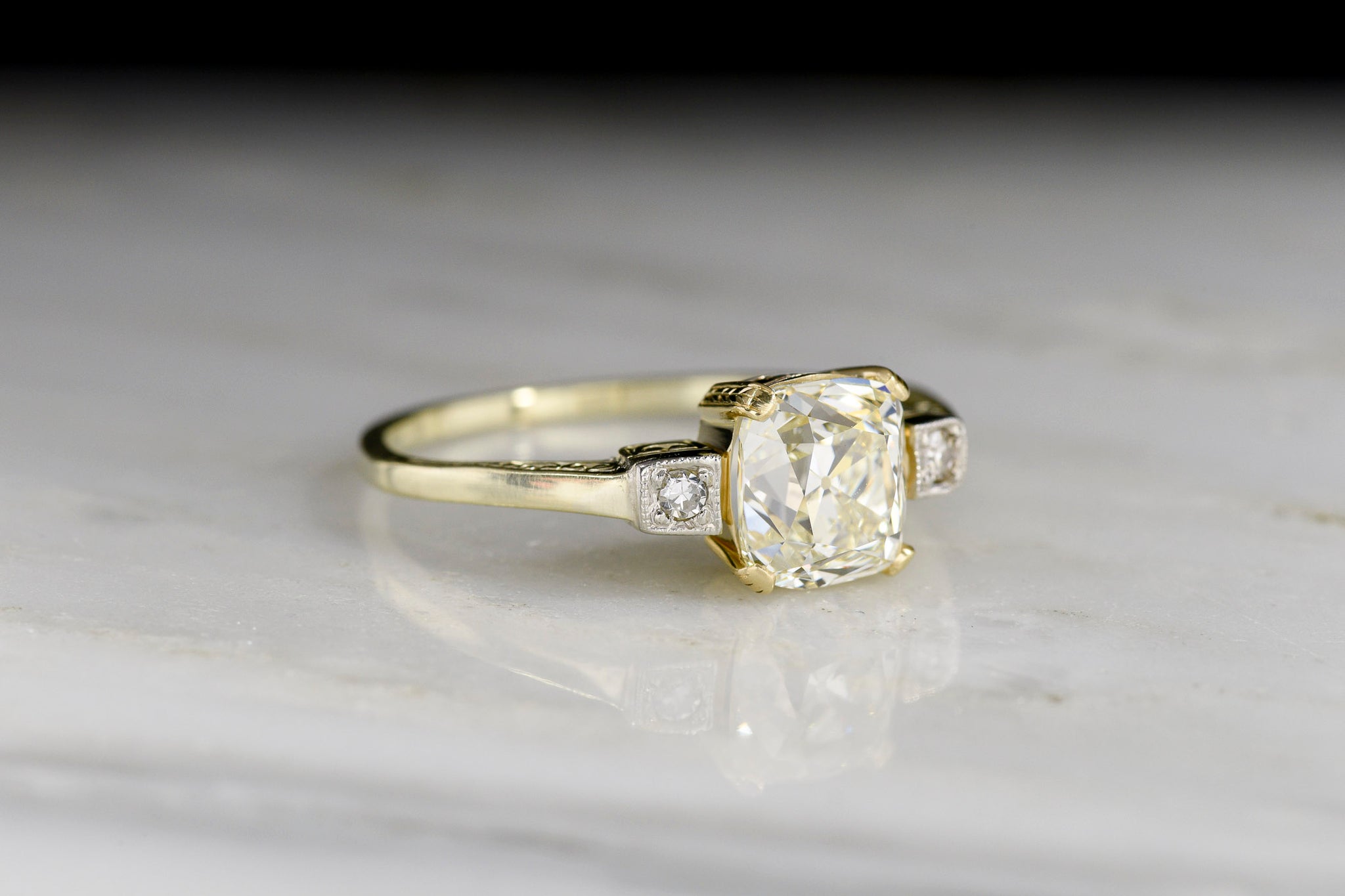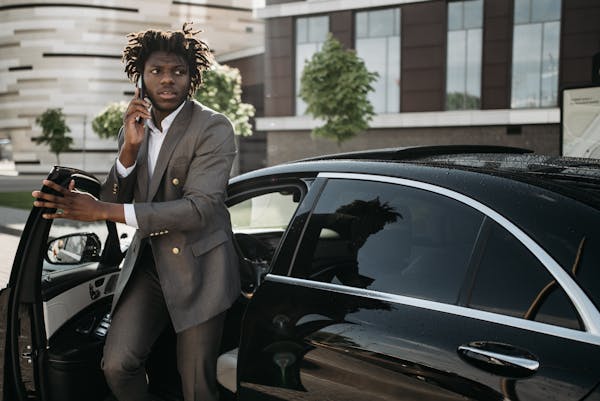Tired of ransacking the malls and chain stores to find something new and different? Not seeing anything tempting in catalogs? Then try VINTAGE! Where almost EVERYTHING is one of a kind! Let’s put it this way–you won’t meet yourself at a party!
Maybe you think because you’re plus-sized, you can’t wear vintage clothing. Yes, you can! I’m tall, busty, broad-shouldered and plus size, and my closet is full of great vintage clothes. Put it this way: if a 300-pound drag queen can dress like Cher, you can be anybody you want to be. We’ll start with the basics. Imagine me holding your hand as we walk through Vintage Land!
Finding YOUR Unique Vintage Style
How have you always wished you looked? Like a wild rockabilly babe? A blonde sexbomb like Marilyn Monroe? A temptress like Bettie Page? A 20s flapper like Clara Bow? A broad-shouldered 40s gal like Joan Crawford? A 60s Mod like Edie Sedgwick? Or a big-haired 80s Joan Collins? All of that is possible, when you mix the right modern and vintage pieces.
Think about what era attracts you the most, and why. That’s the key to finding your vintage personality.
Some are drawn to the beads, fringe and velvets of the 1920s. Others want the sleek look of the 1930s. Still others love the ultra-structured look of the 40s, or the “bombshell” look of the 50s. Others love Mod, hippie, in fact there are too many styles and eras to list here!
Don’t be afraid to dream! The only limit when starting out is your imagination.
Starting Out: The Basics
First, take a good long look at your figure, and what you want to emphasize. It can be your bust, your legs, your booty, or your face. You need to take your measurements everywhere: bust, waist, hips, shoulder to waist, waist to crotch, inseam, thigh width if you’re going to be buying pants.
Yes, this part is probably scary. A lot of us don’t want to know our measurements. We kid ourselves about what dress size we are. I once had to take my measurements over the phone for a television costume, and after each measurement, I screamed! (Luckily the costume lady was used to it.)
I recommend that you also measure your absolute favorite pieces to see how to get your best fit. Not the ones you USED to wear, the pieces you wear NOW. Some like it tight, like Mae West; some like it flowy. When it comes to setting your personal style, knowledge is power! And what is it about these pieces that you love? The color? The cut? (Sweats don’t count!)
You can go to your local bookstore, or look on the Internet to look at pictures of old time movie stars. In the old days, Hollywood fan magazines encouraged women to identify themselves with movie stars. But who can identify with Nicole Kidman? Or Charlize Theron? This will also give you ideas of styles and eras. Pictures of the actual eras and personalities are much more helpful than those “How to Do Vintage” guides, which end up making everyone look alike!
Starting Out: The Basics, Part Two
Your Figure Type
According to experts, there between four to six figure types for plus sized women. I’ll choose the four most basic.
1) The Hourglass
Your overall shape is curvy, your hips and bust roughly the same width. Your waist is well defined, and at least seven inches smaller than your bust or hips. You may have a round, full derriere. Your thighs are full, but narrower than your lower hips and your lower legs are shapely and proportionately slim.
2) The Pear.
Your hips and thighs are wider than your shoulders and bustline. You store most of your weight in the stomach, thighs, and buttocks. Your hip may broaden right under the waist but is usually widest eight inches below your waist at the “low hip.” Kate Winslet, believe it or not, is a Pear.
3) The Rectangle. You are straight up and down, with a somewhat small bust and little or no waist definition. You may have a fleshy back and slightly short neck, but you tend to have relatively slim arms and legs. Kim Cattrall is a Rectangle, but you would never know it.
4) The Apple. You carry most of your weight in your bust, waist, and back, with relatively slim hips and legs. You tend to have a somewhat top-heavy appearance. Catherine Zeta-Jones is considered an Apple!
Which Body Shape Are You?
Not every body is EXACTLY like the shapes described above, but pick the one that comes closest to you.
Okay, first of all, anybody of any shape can wear a caftan or a muumuu, so that’s out of the way. These are not hard and fast rules, just suggestions.
Hourglass: go for the sexy! Like Marilyn, you can wear tight, fitted 50s cardigans, capri pants, pencil skirts, and wiggle dresses. Or like Jean Harlow, you can pull off those slinky, sexy 30s bias-cut gowns and slips (although you might have to wear Spanx underneath). You don’t have to wear stilletos, but any kind of shoe that shows off your legs is a good idea. Mix modern pieces like corset tops to showcase your bosom or shrugs to cover your upper arms if you are self-conscious about them. You can wear almost any decade, except Mod might look “wrong” on your figure, especially A-line dresses. And too many ruffles can look costume-y unless you are on the plus petite side.
Pear: Often you have shapely arms, so you can get away with camisoles and other sleeveless looks. Long Victorian and Edwardian-style skirts (and their 70s counterparts) are excellent for your shape, as are vintage boots, high, low, and mid-calf. Remember how great Kate Winslet looked in her “Titanic” gowns? If you want to buy mid-century dresses, look for gowns on the longer side, that will showcase your top and skim the bottom. These will be easier to find in the 1950s and 1970s than the 40s or 60s. Avoid novelty pockets on your skirts and dresses. Also avoid 70s “hip-hugger” jeans, but look for dreamy tops from that same decade. Unlike the Hourglass, you can work the A-line cut of the 1960s.
Rectangle: Your wardrobe needs curves, but the clothes that work for the Hourglass won’t work on your shape. Look for circle skirts (not pencil skirts!), luscious shoes, dresses with neck and shoulder interest (not ruffles, but more sophisticated details like darts, pleating, and sequins). You were made to wear beaded 1920s dresses beautifully. Shawls and scarves also add flow and curve to your look. And you can really pull off Mod!
Apple: Depending on the dress, you, too, can wear Mod clothes (remember Stacy Turnblad in “Hairspray”?). Show off your legs in shorter dresses, display your cleavage in modern surplice necklines with vintage mini skirts! You can also wear beaded 50s cardigans with modern flat-front pants. As long as you avoid bulk around the waist and don’t hide in layers and layers of fabric, you can wear almost any decade.
Acquiring Your Unique Vintage Wardrobe
Start with basic pieces, just the way you would with your contemporary wardrobe. If you like dresses, start there. Ditto with separates. Searching online is a better bet than most vintage stores, although you never know what you will find at your local thrift!
Alas, as with contemporary clothing, a lot depends on your budget. There are spectacular plus-size dresses out there from all eras, but many of them also have spectacular price tags. I don’t sell expensive vintage clothing myself, but then, I don’t often come across a famous designer or a silk dress in perfect condition. Dior didn’t do plus size.
If you simply HAVE to have that mink coat, or taffeta dress, if you have the money, buy it! You won’t regret it for a minute. I’ve spent more than I meant to once or twice, but it was for dresses that I adore and wear fairly often.
But if you are on a tight budget, look for vintage winter clothes in the summer. Also limit how much vintage you buy. Vintage accessories are often affordably priced and you can get the look you want with the right vintage hat, shoes, bag, and jewelry, for far less than that mink coat.
And remember, part of the cost of your vintage wardrobe will be upkeep. Unlike today’s clothes, you can’t throw your Ceil Chapman in the washing machine. Much of it has to be professionally cleaned or carefully hand-washed.
And invest in yourself! If you want a look that is high-maintenance, like a glamorous platinum blonde, that’s part of your budget: the hair salon, nail polish, etc. You can wreck a great vintage look by carrying a ratty old microfiber bag and not bothering to do more with your hair than fluff it with your fingers.
The Most Important Part of All!
Be confident! You are beautiful!
You can pull off whatever look you choose, as long as you’re comfortable and confident in your clothes and accessories. It takes courage (or what they used to call in the 1930s, “moxie”) to pull off a look that is meaningful to you. But the more you do it, the more you’ll like it. I promise!
Now, get shopping! And remember, BIG GALS RULE!






More Stories
Designer Plus Size Clothes Buying Tips
Women’s Casual Clothing – Myriad Types on Display
New Season of Plus Size Clothing for Women – New Party Wardrobe!